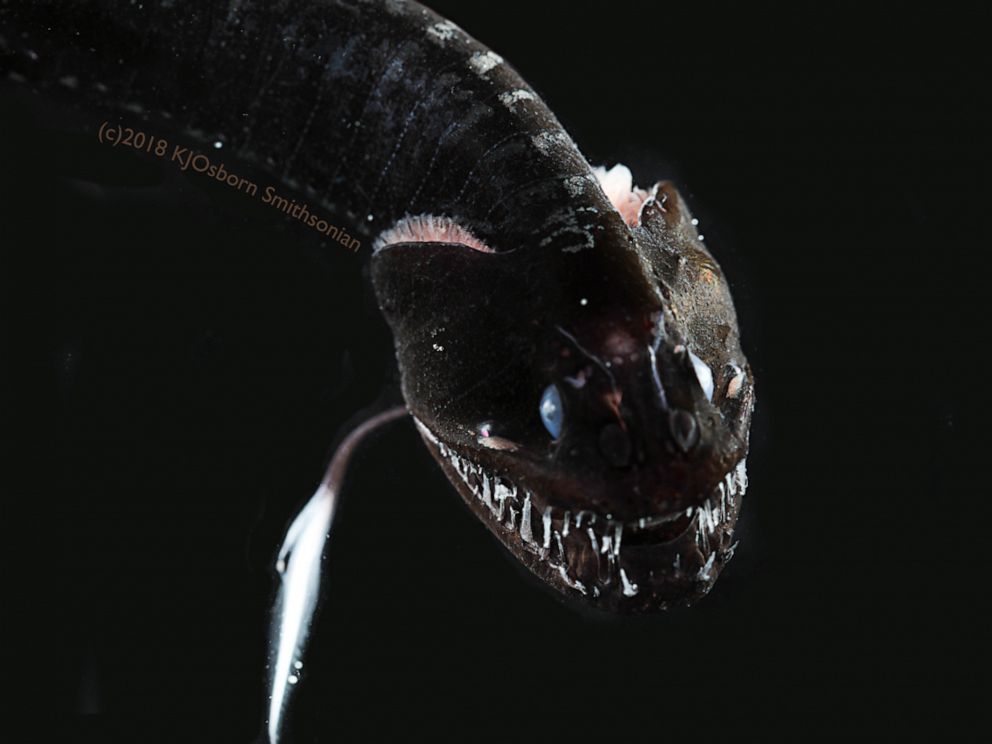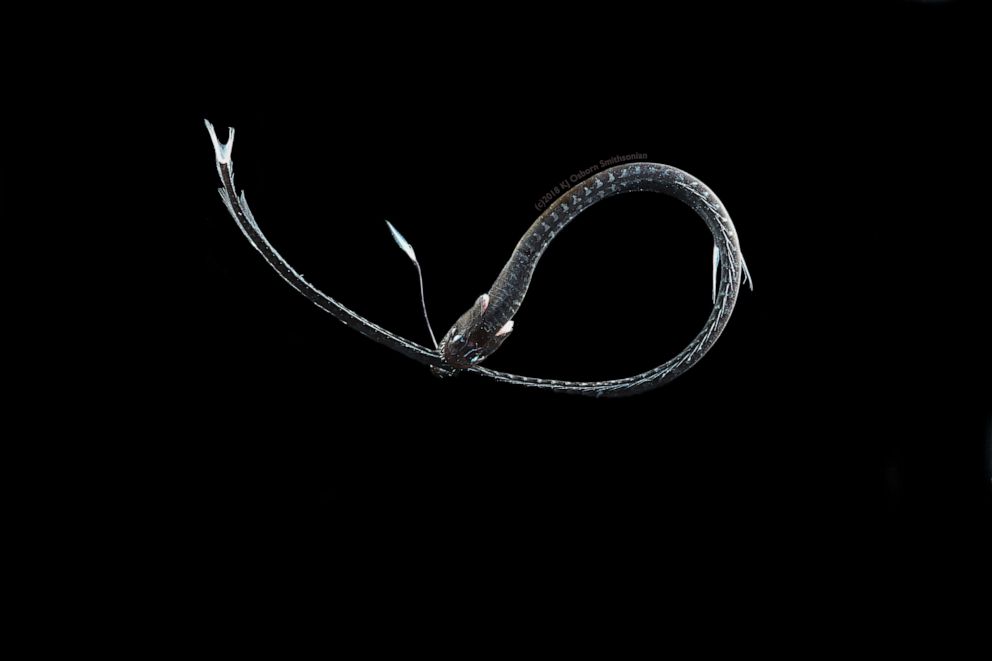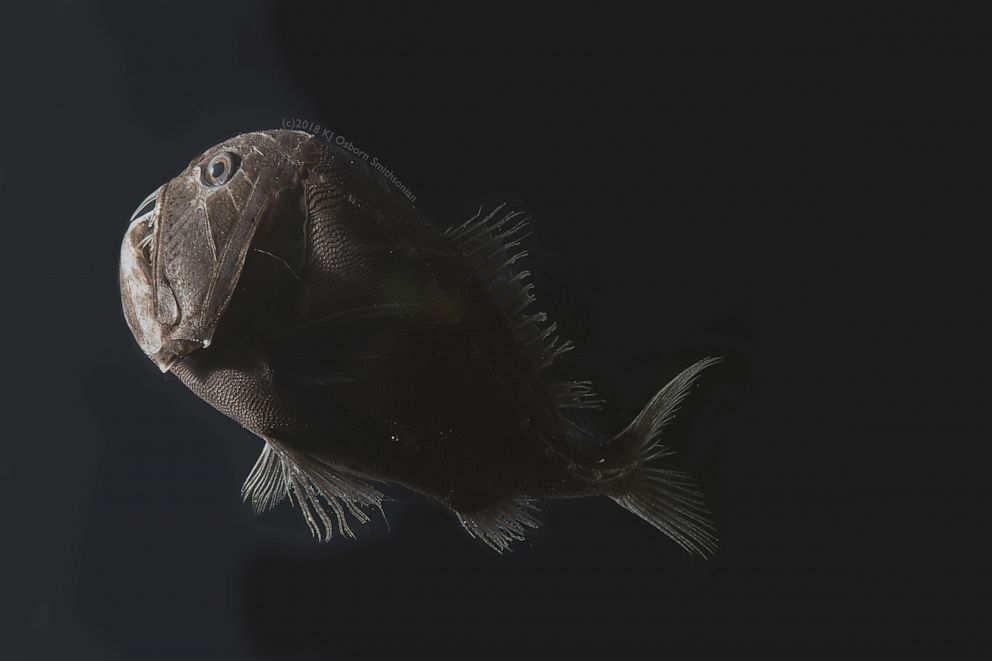Scientists discover ultra-black deep sea fish, among the darkest creatures ever found
The fish was found at 200 to 2,000 meters below the surface.
At least 16 types of recently discovered deep-sea fish are among the darkest creatures ever found, according to a study published Thursday.
The fish -- called the ultra-black fish, which live anywhere between 200 to 2,000 meters below surface -- are so dark that they often appear just as a silhouette, according to one of the authors, Alexander Davis, of the study, which was published in Current Biology.
"They look almost like something photoshopped out of whatever you're looking at," Davis told ABC News. "Out of the water it's a little bit different cause they're so shiny, but you can still tell they're just incredibly black."
He described them as a "matte black."

To qualify as ultra-black, a species must reflect less than 0.5% of the light that hits it.
One of the fish that was recently discovered, the Oneirodes species, reflected between .044% to .051%, according to the study.
That miniscule reflection surpasses the darkness of ultra-black butterflies, which reflect .06% to .5% of light that hits them, and about equals the blackest birds of paradise, which reflect .05% to .31%, the study reported.
For comparison, black paper reflects about 10% of the incident light that hits it.

Davis said the search for the fish began when his colleagues, Sonke Johnsen and Karen Osborn, wanted to photograph these particular fish. However, Davis said they kept having trouble because "they were really, really black."
"You'd either have to blast them with tons of light to see any detail or you'd just get a silhouette," he said.
They were able to capture the fish by dropping a large net down into the sea, anywhere between 200 to 2,000 meters below surface, and running it through the water.

"From there, every so often something interesting pops up," Davis said.
From that point on, they worked to understand why the fish were so black.
Davis said they eventually learned their pigment was because the melanin was playing a dual role of scattering the light and absorbing it, a rarity in ultra-black creatures.
Davis believes the fish they found are just a small subset of the ultra-black fish that exist in the sea.
"It's likely there are many more of these super black deep sea fish out there," he said. "The odds that we've captured every single ultra-black fish seems really slim."



